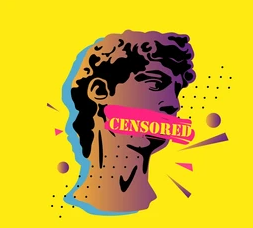The Paradox of Censorship and Control
Since February 13th, several farm unions in India have been on strike, seeking minimum support prices for their crops. When the Indian government responded swiftly with barbed wires and cement blocks around the city borders, the farmers took to social media. Before long, numerous reporters, influencers, and prominent farm unionists were covering the farmers’ protests on X (formerly Twitter).
The government subsequently issued “executive orders” to the platform, warning X that the company would be “subject to potential penalties, including imprisonment”, even adding that the government “disagreed with these actions”. Taking heed of the warnings, X took down the posts and accounts of these individuals, although notably adding that they did not agree with the government’s actions.
As the situation continues to unfold, activists around the world are forced to consider that this incident may set the precedent for future campaigns: Should governments be given the authority to censor self-expression in the name of maintaining public order?
From the perspective of governments around the role, censorship is an integral tool to control incendiary content that may lead to societal harm. This was demonstrated during the onset of the COVID-19 pandemic, where strict measures to curb misinformation were essential to prevent society from descending into chaos. Hence, governments have the incentive to make use of censorship to reduce the risk of violence and unrest.
Yet, issues arise when censorship can be freely used for the suppression of any form of dissent. While capable of protecting public order, censorship can cause a concentration of power, allowing governments and other platforms to remain unchecked. Governments and authorities are often entrusted with the power to take down social media posts and censor expressions of free speech when they are deemed “a threat to national security”. However, who holds them accountable for what is considered a threat?
Nevertheless, there are mechanisms to ensure checks and balances within the system, such as making use of social media platforms themselves to keep governments accountable or being able to file appeals for certain pieces of information to no longer be censored. Through a better understanding of censorship policies in various countries, activists will be able to better protect their digital rights, and raise awareness for grassroots campaigns without the risk of censorship.
